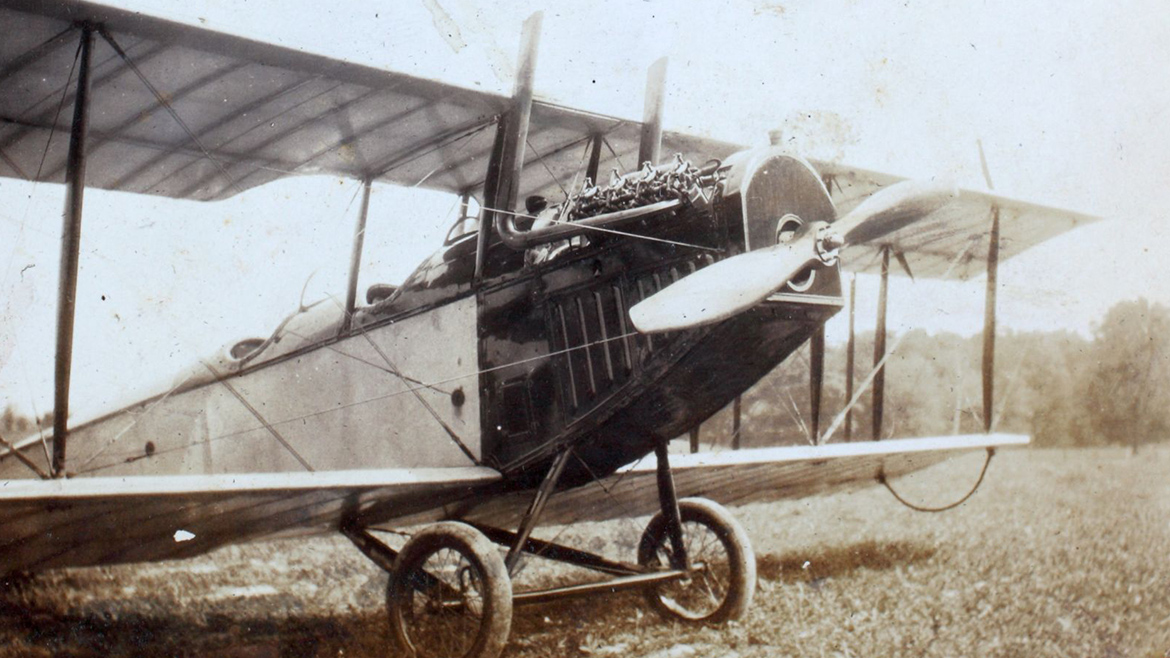Mike Matthes: A Brief History of Flying

“Come Josephine in my flying machine. Going up she goes! Up she goes!” – Fisher & Bryan, 1910
Written in the early days of “aeroplanes” and aviation, the song tells the story of daring young pilots courting their sweethearts with “flying machines.” The lyrics express the technological optimism of the era. I can only imagine the exhilarating feeling of being in an open-cockpit flying machine, something not many experienced just over 100 years ago.
Early airfields consisted of little more than a long and level grass field. The publication A Boone County Album, in 1971, mentions several of these early fields, such as the Cave Johnson farm, northwest of Columbia; the Dodd farm, south of Columbia; and the Jones farm.
The Jones farm, owned by Moss and Lou Jones on land which, in the early 1900s, was northwest of city limits, would play the most prominent role in the history of aviation in Columbia.
Two brothers, John L. and James M. Allton, grew up in Columbia. John, like many others who would pursue aviation, first took an interest in the still fairly new occupation of automobile mechanic. It was said that his brother was more of a thinker.
Together, the brothers would form Allton Flying Service in Columbia in 1926. The business was formed “to manufacture, buy and sell aeroplanes, dirigibles and other vehicles and machines intended for the use as a means of transporting persons and freight in the air.” In 1928, the brothers purchased 43 acres of the Moss Jones farm, located on U.S. Highway 40, just west of Columbia. Today, we all know the property as Cosmo Park.
The location of Allton Flying Service was perfect. In 1928, the Civil Aeronautics Administration determined the field was well located for an emergency landing strip for planes flying between St. Louis and Kansas City. However, improvements to the airfield were needed, and only a municipality, not a private owner, was eligible for funding to make those improvements.
As I write this, I hold in my hand the original 1929 agreement between the Alltons, the Columbia Chamber of Commerce, and the City of Columbia that established landing rights at Allton Airfield for private planes and for government airmail planes. This was surely a brave step for the chamber and for the city, as flight was still in its formative years. The City of Columbia, recognizing the potential for passenger and cargo air service, leased the property from the Allton brothers on May 7, 1929 for the annual rental of $1,000, and then purchased the property in 1937. Would this venture be a good investment of public money? Could it even be done?
The potential for commercial air service came slowly. Most traffic was general aviation, with a smattering of charter flights. In “A History of Columbia and Boone County,” the author John Crighton notes, “The first major commercial flight from Columbia Municipal Airport occurred on March 9, 1939, when a group of Stephens College students took off for spring vacation in a twelve-passenger Lockheed Electra airplane of the Chicago and Southern Airlines bound for Chicago.”
In the late 1940s and early 1950s, Columbia businesses supported the city spending money for airport upgrades to attract commercial air service to Columbia. The Columbia Chamber of Commerce formed an airport committee, which included Perry Phillips, Hartley Banks, and James Allton. These business leaders recognized the importance of commercial air service to both economic development and the people of Columbia.
Success finally occurred in 1952, when Ozark Airlines, using DC-3s, began commercial air service at Columbia Municipal Airport with connections to St. Louis, Kansas City, Chicago, Tulsa, and other Midwestern terminals.
Ten years later, the National Airport Plan recommended that Columbia have a 5,300-foot runway to accommodate larger commercial aircraft, such as the Convair CV340. A study was commissioned, and it was determined the improvements would cost $3 million for clearing, grading, runway extensions, and other improvements. The city hired Horner & Shifrin to study the expansion, and in 1963, they determined it was not feasible to extend either of the two existing runways.
The study recommended the city find a new location and build a new regional airport. The Federal Aviation Administration indicated that for cities as close together as Columbia and Jefferson City, a regional airport would likely be required to obtain federal funding. The concept of a regional airport was fairly new then. It was an era when most cities likely preferred to manage their own airport.
In January of 1964, Columbia voters approved a $1.9 million bond issue to match federal funds to construct a regional airport. After much discussion, city leaders chose the Elkhurst site, south of Columbia on Route H and U.S. Highway 63, midway between Columbia and Jefferson City. One of my predecessors, Ray Beck, played an important role in planning and building the new Columbia Regional Airport.
The wisdom of those early leaders encouraged the birth of a municipal (and, later, regional) airport to serve the needs of commerce and people. Now, almost 50 years after Columbia Regional Airport opened its doors, how will we face immediate challenges with our aging terminal building, runways, and taxiways and the need to attract and retain quality air service providers?
Take flight with me next month, when we share a vision for the future for Columbia Regional Airport.
The writings of David Sapp, a local Boone County historian, were invaluable in researching and writing this article.


